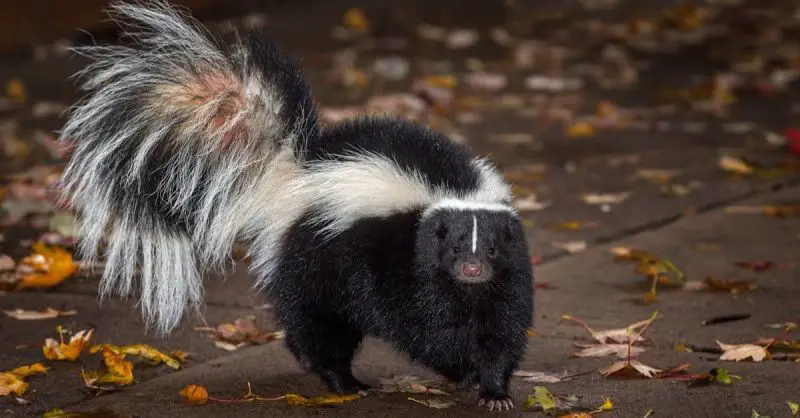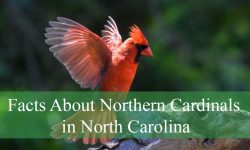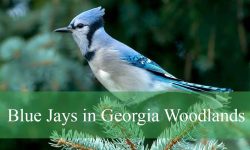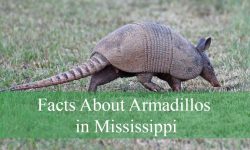Pennsylvania residents know skunks well, not only for their bold coloring but also for the strong scent they use as a last-resort defense. They roam suburban neighborhoods, forest edges, farm fields, state game lands, and even quiet stream corridors in nearly every part of the state. Despite their reputation, skunks are far more complex, adaptable, and ecologically important than most people realize.
Pennsylvania provides excellent habitat for striped skunks and the smaller, less-commonly seen eastern spotted skunk. These species navigate a wide variety of landscapes shaped by seasonal weather, food availability, human activity, and interactions with predators. Their behaviors change dramatically between summer and winter, and they influence ecosystems in ways that often go unnoticed.
Skunks are more than “animals that spray.” They are insect controllers, seed dispersers, scavengers, burrow engineers, and highly adaptable survivors. This article explores ten surprising facts about skunks in Pennsylvania, revealing how they live, what they contribute to local ecosystems, and why understanding them can change how we view these misunderstood mammals.
1. Pennsylvania is home to two skunk species—one of them rarely seen

Most residents recognize the striped skunk, the classic black-and-white species common throughout North America. They thrive in Pennsylvania’s rural, suburban, and forested areas, especially where food and sheltered den sites are abundant.
But fewer people know that Pennsylvania also has the eastern spotted skunk. This smaller species has a unique pattern of broken white stripes and spots rather than solid stripes. Once fairly widespread, their populations have declined due to habitat changes, increased predation, and shifting agricultural landscapes.
Eastern spotted skunks prefer rocky slopes, early-successional forests, and dense brushy areas. Their elusive nature makes them difficult to observe, and most knowledge comes from research cameras and track surveys. Understanding their distribution helps biologists track ecosystem health in Pennsylvania’s more remote regions.
2. Skunks control insect populations more effectively than many birds or mammals
In Pennsylvania’s ecosystems, skunks act as natural pest managers. Their diet is dominated by insects—especially grubs, beetles, wasps, and caterpillars—that can damage crops, lawns, and forest vegetation.
During warmer months, skunks dig small, cone-shaped holes in yards or forest floors while searching for soil-dwelling insects. These shallow pits often lead homeowners to believe they’re causing damage, but the holes are minor and often beneficial for aerating soil.
In agricultural regions of central and eastern Pennsylvania, skunks help reduce pest populations that would otherwise affect cornfields, orchards, and vegetable crops. Their consumption of larvae and overwintering insects makes them an important component of natural pest control systems.
Even in suburban settings, skunks reduce tick populations indirectly by feeding on mice, which are major tick hosts. Their role in regulating mammalian and insect communities has long-term ecological benefits.
3. Their spray is a last resort—skunks warn several times before using it
Although skunks are famous for their defensive spray, they use it sparingly. Producing the sulfur-based chemicals requires energy, and skunks need time to replenish their supply. For this reason, they try to avoid spraying unless absolutely necessary.
Before spraying, skunks give multiple warnings:
- Hissing
- Foot-stomping
- Tail raising
- Short charges or bluffing movements
- Turning their backs while looking over their shoulder
Striped skunks typically spray only when they feel cornered. Eastern spotted skunks display an even more dramatic warning—they often perform a handstand, balancing on their front legs while pointing their tail forward.
Spraying is a powerful deterrent. The odor is carried by oily compounds that cling to fur and fabric, lingering for days unless neutralized. Understanding these warnings reduces conflict and helps both humans and wildlife avoid unnecessary encounters.
4. Pennsylvania skunks are opportunistic omnivores that adapt quickly to changing environments
Skunks thrive in diverse habitats because of their varied diet. While insects form their core food source, they also eat:
- Berries
- Fallen fruit
- Small rodents
- Amphibians
- Bird eggs
- Carrion
- Seeds and plant matter
- Human-associated foods such as pet food left outdoors
Their flexibility allows them to move between forests, wetlands, farmland, and neighborhoods with ease. In fall, as insects become less abundant, skunks shift to fruits and nuts, helping disperse seeds across forest floors.
Winter scarcity pushes them toward scavenging. They may consume carrion from deer, small mammals, and leftover hunter remains found in wooded regions of the state. This scavenging behavior contributes to decomposition processes and nutrient cycling.
Their ability to adjust quickly to seasonal and human-driven changes is one reason skunks thrive in Pennsylvania more consistently than many other small mammals.
5. Skunks do not fully hibernate in Pennsylvania—they enter lighter periods of dormancy
Pennsylvania winters can be long, especially in the northern counties and higher elevations of the Allegheny Plateau. Skunks manage cold temperatures through a process called torpor—a lighter, flexible form of dormancy.
Instead of entering a months-long hibernation, skunks go through cycles of reduced body temperature and slowed metabolism. They shelter in dens during cold snaps but may emerge during milder winter days to forage.
Dens may include:
- Abandoned groundhog burrows
- Hollow logs
- Crawl spaces under sheds
- Rock piles or brush piles
- Deep leaf litter
During the coldest periods, multiple skunks sometimes den together for warmth. This behavior is more common among females and juveniles than adult males, who typically den alone.
Understanding their winter dormancy helps explain why tracks occasionally appear in the snow and why skunks may be spotted unexpectedly on warmer winter nights.
6. Skunks play a larger role in seed dispersal than most people realize
While skunks are not typically thought of as seed dispersers like birds or squirrels, they play a meaningful role in moving plant species across Pennsylvania landscapes. Their consumption of fruits and berries—especially in late summer and fall—helps transport seeds to new areas.
Seeds from wild grapes, blackberries, nightshade species, pawpaws, and crabapples can pass through their digestive systems and germinate elsewhere. Because skunks move between forest edges and open fields, they carry seeds across habitat boundaries.
Their nocturnal foraging patterns contribute to plant diversity in early-successional habitats—areas recovering from disturbance where seed dispersal is essential for plant community development. In Pennsylvania’s regenerating forests and reclaimed mine lands, skunks support vegetation recovery in subtle but valuable ways.
7. Skunks communicate through scent marking—spray is just one part of the picture
Skunk communication relies heavily on scent. They use musk glands not only for defense but also for marking territory, identifying den sites, and signaling reproductive readiness.
Scent posts often appear near logs, rocks, trail edges, or burrow entrances. Skunks use these chemical signals to establish boundaries, reduce conflict, and coordinate mating.
During breeding season—typically late winter through early spring—males travel widely in search of females. Their scent marks help locate receptive females and reduce unnecessary encounters with rival males.
This chemical communication system is one of the most advanced among small mammals in Pennsylvania. Understanding it helps explain why skunks revisit certain travel routes, den sites, or foraging patches repeatedly across seasons.
8. Pennsylvania’s skunk populations help researchers track disease ecology and wildlife health
Skunks are important subjects in disease and health studies because they can host pathogens that reveal broader ecological conditions. While skunks can carry rabies, the actual incidence is low relative to overall population size. Nevertheless, monitoring skunk health offers insight into regional disease dynamics.
Other parasites and pathogens—ticks, mites, intestinal worms, and certain bacteria—help researchers understand environmental pressures, climate effects, and ecosystem stress.
In Pennsylvania, where climate variability influences wildlife movement and disease distribution, skunks serve as early indicators of changes in insect populations, rodent activity, and predator dynamics. Their presence near human habitation also makes disease tracking more consistent compared to elusive forest mammals.
By examining skunk health, biologists gain valuable data that informs public health strategies, wildlife management plans, and conservation decisions.
9. Skunks help clean the environment by scavenging carrion and organic waste
Skunks play a valuable role in nutrient recycling across Pennsylvania. Their scavenging habits help break down animal remains that would otherwise take longer to decompose.
They often feed on roadkill remnants, leftover deer carcasses during hunting season, and other forms of carrion found along forest edges or stream banks. These scavenging activities:
- Remove decaying organic material
- Reduce disease spread among other wildlife
- Provide food during periods of scarcity
- Help maintain ecological cleanliness
In ecosystems where vultures, coyotes, and foxes already scavenge, skunks fill a smaller but still important niche. Their ability to locate carrion at night complements daytime scavengers, contributing to around-the-clock decomposition.
Understanding their scavenging role challenges the idea that skunks are nuisances; instead, they support ecosystem processes that benefit both wildlife and human communities.
10. Despite their reputation, skunks are timid animals that avoid confrontation
Skunks rarely act aggressively toward humans or pets. Their behavior centers around avoiding conflict, conserving energy, and seeking food quietly.
When approached, they prefer retreat. They may hesitate or freeze before giving warnings, signaling that they do not want to spray. Most bites or defensive encounters happen when animals are surprised, cornered, or handled improperly.
Their timidity makes them vulnerable to vehicle collisions, habitat loss, and predation. Great horned owls, in particular, prey heavily on skunks because owls cannot smell their spray. Foxes, coyotes, bobcats, and domestic dogs occasionally prey on them as well.
Recognizing the true nature of skunks helps reduce fear and encourages coexistence. In Pennsylvania—where wide habitat diversity supports healthy skunk populations—understanding their behavior can prevent unnecessary conflict.
Frequently Asked Questions About Skunks in Pennsylvania
Are skunks common in Pennsylvania?
Yes. Striped skunks are widespread throughout the state. Eastern spotted skunks are present but far less common.
Do skunks spray without warning?
No. They give multiple warnings before spraying unless startled or cornered.
Are skunks dangerous to humans?
They are shy and avoid conflict. The main concern is potential rabies exposure, but cases are rare.
What do skunks eat?
Their diet includes insects, grubs, small mammals, berries, fruits, seeds, eggs, and carrion.
Why do skunks dig in yards?
They dig for insects and grubs. The holes are shallow and usually harmless.
Do skunks hibernate?
No. They enter torpor during cold spells but remain active on warmer winter nights.
How long do skunks live in the wild?
Typically 2–4 years due to predation and road mortality, though they can live longer in protected environments.
Are skunks beneficial?
Yes. They control insects, disperse seeds, scavenge carrion, and support ecological balance.
How can I prevent skunks from coming near my home?
Remove food sources, secure garbage, avoid leaving pet food outside, and limit access under structures.
Do skunks climb?
Striped skunks rarely climb. Eastern spotted skunks can climb trees and rock crevices more easily.
Final Thoughts
Skunks are far more important to Pennsylvania’s ecosystems than their reputation suggests. They regulate insect populations, disperse seeds, recycle nutrients, and help researchers understand environmental health. Their behaviors—timid, strategic, and ecologically purposeful—show how deeply they are connected to the landscapes they inhabit.
Seeing a skunk at dusk or spotting their small digging signs along a forest edge offers a glimpse into a world of quiet ecological work happening beneath the surface. Learning about skunks helps replace misconceptions with appreciation, turning a misunderstood animal into a key part of Pennsylvania’s natural heritage.






